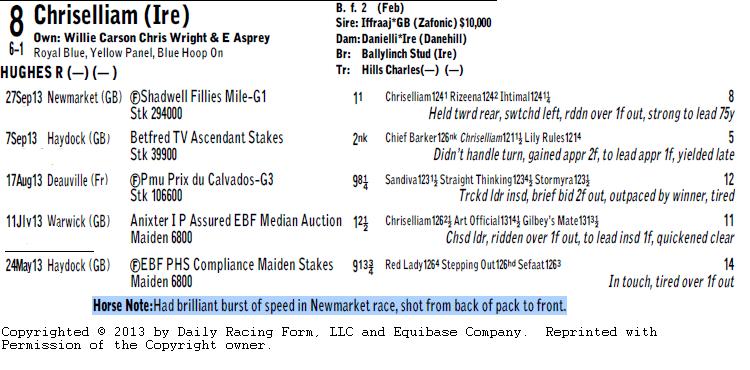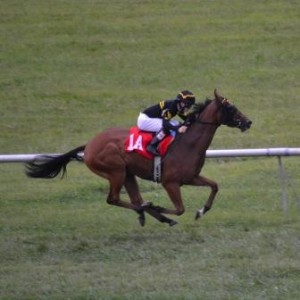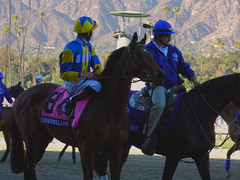The Art Of Visual Handicapping – And A Breeders’ Cup Lesson
We classified this article under the “Trips” category, but in fairness it involves much more than the “good” or “bad” trip approach to handicapping. Trip handicappers are always on the lookout for circumstances where a horse ran worse than expected, but had one or more excuses that explain their sub-par performance. This can offer value when other bettors jump off that horse’s bandwagon.
On the flip side, discovering that an above average performance was bolstered by a favorable trip can offer value on other horses in an upcoming race. For example, maybe a horse benefited from a speed duel, and was sitting in the “garden spot” immediately behind dueling leaders who tired dramatically in the stretch. If circumstances in his next race are different, he might not fare so well.
Different from pure trip handicappers, visual handicappers are looking for something else. Instead of focusing on how a horse reacted to race dynamics, or was impacted by the actions of other horses, a visual handicapper is interested mainly in the actions of a single horse and their jockey. Some of the questions asked by a visual handicapper are:
- How well did the horse move over the surface?
- Did the horse gallop out strongly, or was he out of gas after hitting the finish line?
- Was the jockey asking for an all out effort from the horse?
- How much running did the horse do on his own?
- How did the horse react when eye-to-eye with another horse?
- Was the jockey riding the horse confidently?
- How did the horse respond to the use of a whip?
- Were the jockey’s hands low, or high up on the neck?
- Is the horse a “one-pace” type, or are they capable of a “burst” or “turn-of-foot” as referred to by some?
- Did the horse change leads at the appropriate times?
In this article we’re going to delve into one of these questions and provide a race replay to help explain the importance of the concept. In future articles we’ll go over the remaining questions.
Let’s start with #9 from the above list – looking for a “burst” or “turn-of-foot” when watching a horse. This is a quality that is especially useful in turf races, where the majority of the serious running is done late when openings become available.
On November 1st, 2013, in the 9th race at the Breeders’ Cup in Santa Anita was a horse from Europe named Chriselliam. Her abbreviated past performances (PPs) appear below.

A couple of things to notice in these PPs. The trip comments are longer than those in North American races. This helps to make up for a lack of running lines and intermittent times. In her last race at Newmarket is a comment “strong to lead 75y.” Wanting to know more about this and to see it for myself, I went searching on YouTube for a race replay. As a result of watching this replay, I added the “Horse Note” at the bottom of her PPs using DRF Formulator. Here is the replay. And judge for yourself. She is #3 with the jockey in the blue and gold cap, lingering at the back of the pack for most of the race.
http://www.youtube.com/watch?v=vSlSQepASCA
Well, do you agree with the horse note? That is exactly the type of “burst” I was looking for in this Breeders’ Cup turf race. And seeing it actually happen on a race replay was much more convincing than just reading “strong to lead 75y.”
Of course, the question remained, could she repeat that effort in California? Here is the replay of the Breeders’ Cup race, she is #8 with the same blue and gold silks.
http://www.youtube.com/watch?v=L3VmbkqQG_g
As soon as she came uncovered, swinging around other horses in the stretch, this race was over. For anyone that watched how she finished the race in Newmarket, her burst in the lane at Santa Anita was no surprise. A great example on the value of watching a past race, looking for something in particular, and making notes that can be referred to when handicapping the race. This is the art of visual handicapping.
Just a footnote to this story, I had to go to YouTube to find the video replay of the Newmarket race because DRF Formulator provides replays only for races run in North America. Over the past couple of Breeders’ Cups I have had good luck searching for videos on YouTube using the name of a horse and sometimes the name of the stakes race they were in. Non-stakes races are more difficult to find.




11 comments on “The Art Of Visual Handicapping – And A Breeders’ Cup Lesson”